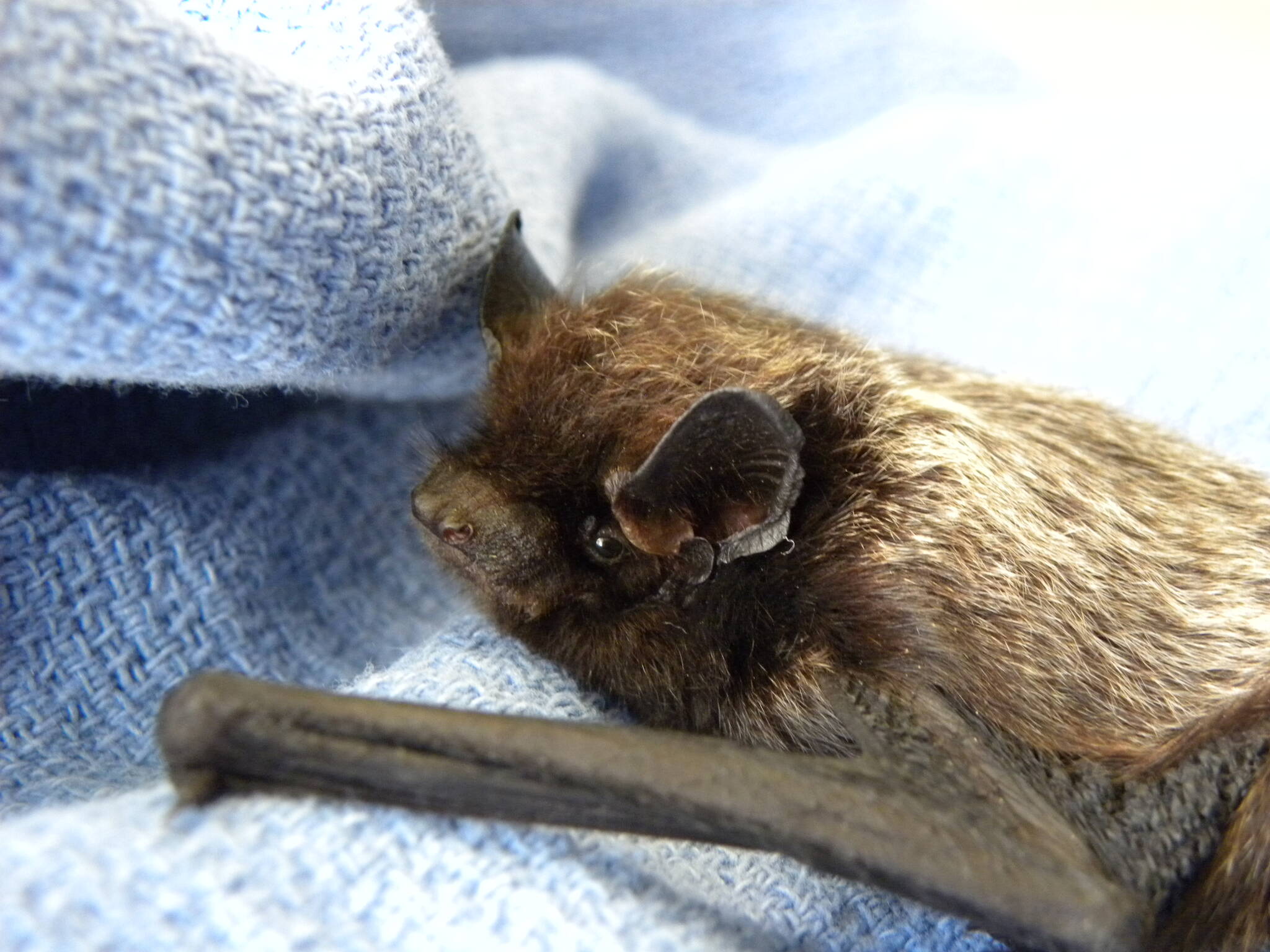Submitted by Russel Barsh, Director of KWIAHT.
It’s still cold enough to appreciate spending evenings cozily around a fireplace, if you have one. Should you venture outside for a few more “sticks” to feed the flames, however, you may be in for a surprise: a plump brown bat, sound asleep among the splints. You won’t be the first islander to find a bat in your woodpile. In fact, one of our larger island bat species is frequently discovered that way. It’s the Silver-Haired Bat, Lasionycteris noctivagans or “hairy night-wanderer”.
Silver-Haired Bats are vole-sized, but they are much lighter for flight—not quite one ounce. Like Big Brown Bats, which are about the same size, they have soft brown fur, but with a sprinkling of silver-grey on their backs. Unlike Big Browns, which are gregarious and prefer to roost in attics and barns together with smaller bat species, the “night wanderer” roosts alone or in small family groups in tree cavities or beneath loose bark. And sometimes in woodpiles!
Silver-Haired Bats are found throughout temperate North America, as far south as New Mexico, and were recently reported in southeast Alaska. Their behavior is adapted to different bioregions. In the central and eastern portions of their range they tend to migrate in early fall up to several hundred miles, not as much southward as latitudinally, to habitats where there are caves or other opportunities to hibernate safely.
But Silver-Haired Bats can overwinter wherever there is dry shelter and (mainly) above-freezing temperatures. In those conditions, rather than hibernating, these bats relocate their day roosts frequently within a small area and spend days at a time in “torpor” – deep sleep. Human homes (and woodpiles) offer excellent temporary warm winter campsites for solo Silver-Haired Bats.
Here in the Pacific Northwest, these bats spend their summers in conifer forests, and may travel two or three miles from their roosts to lakes and ponds, or small forest glades, to feed on swarms of insects. They are relatively slow flyers, and moths can be half or more of their diet.
Older (“mature”), undisturbed conifer forests with lots of snags, rotted-out cavities, and Pileated Woodpeckers—whose neat rectangular excavations are the perfect size for tree-dwelling bats—are paradise for Silver-Haired Bats. Females form small family groups in tree cavities, where they birth their pups in early summer: often twins, which is unusual among North American bats. What is even more unusual is that there is evidence of Silver-Haired Bat mothers moving their pups from one tree cavity to another one nearby, perhaps to fool predators such as owls.
Bat pups clinging to their mothers’ fur can “hang on” for a short flight of less than a minute, which is all that even a relatively large North American bat can do with the pup’s additional weight!
Here in the islands, we have very little “old-growth” left, and further clearing should be
avoided. Studies elsewhere suggest that selective thinning of conifers—opening the canopy a little, but leaving most trees undisturbed, can actually increase habitat quality for Silver-Haired Bats.
And if you do discover a bat in your woodpile, just leave it undisturbed. It will probably leave on its own within hours, to find another cozy place to sleep.
If you find a bat that appears to be injured or unable to fly, call Wolf Hollow at 378-5000. Avoid handling. Island bats do not appear to carry rabies, but they will bite if hurt or frightened.
Ask a Biologist!
If you have questions about the conservation of pest-munching bats or insect pollinators around your home, farm or garden, send an email to: info@kwiaht.org
Look in this space for future announcements of virtual and in-person learning opportunities for a healthy and productive island environment.



